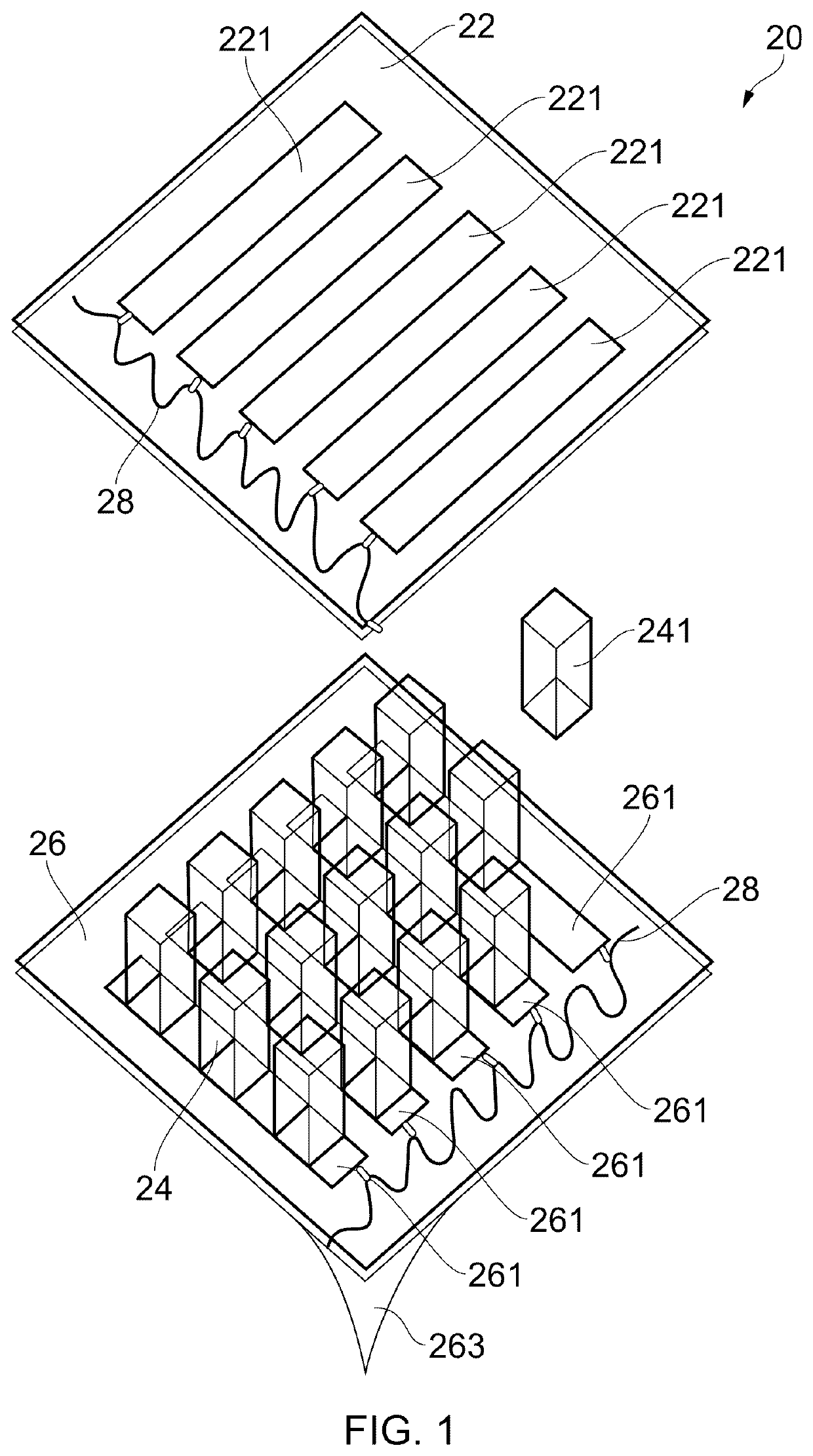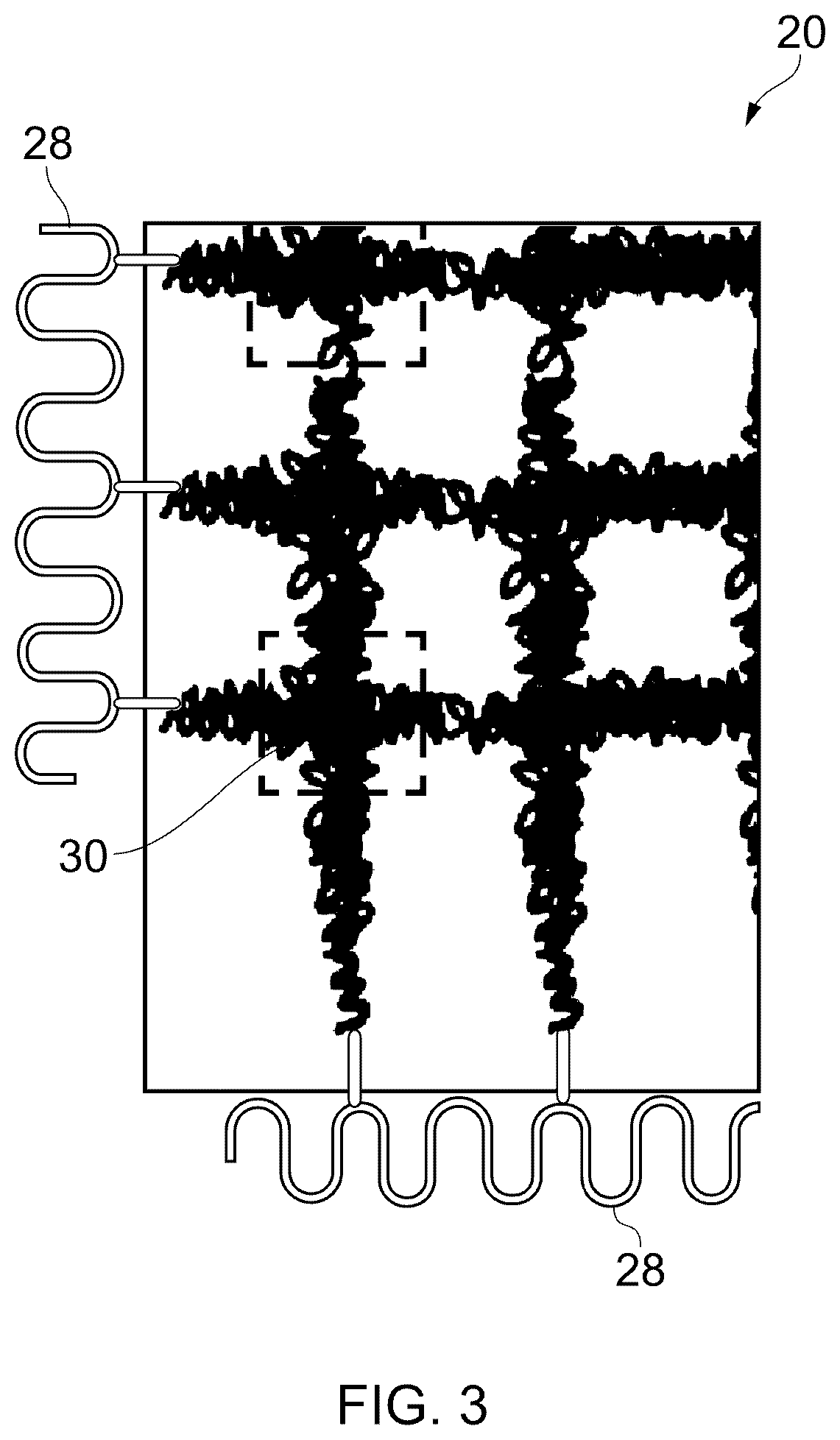A stretchable bidirectional capacitive pressure sensor and method of use
a capacitive pressure sensor and bidirectional technology, applied in the direction of instruments, liquid/fluent solid measurement, structural/machine measurement, etc., can solve the problems of low sensitivity, inability to measure the negative compressive force being applied to the electrode layer, and the improvement of sensitivity is limited to detecting a positive compressive force. , to achieve the effect of improving the resolution of the sensor
- Summary
- Abstract
- Description
- Claims
- Application Information
AI Technical Summary
Benefits of technology
Problems solved by technology
Method used
Image
Examples
Embodiment Construction
[0030]FIG. 1 shows an exploded-view of an example embodiment of the first aspect of the invention. The stretchable bidirectional capacitive pressure sensor 20 comprises a first elastomeric sheet 22, a microstructure 24, and a second elastomeric sheet 26. The first elastomeric sheet 22 and second elastomeric sheet 26 are made from a dielectric material. A series of parallel running conductor lines 221 is located on or in the first elastomeric sheet 22. The microstructure 24 comprises a plurality of elastomeric pillars 241 made from a dielectric material. Each pillar in the present embodiment is a cuboid, preferably a rectangular cuboid with a width of approximately 6 μm and a height less than 300 μm. Although not apparent from the exploded view in FIG. 1, two opposite faces of the cuboid pillars are bonded, either indirectly or directly, to the first elastomeric sheet 22 and the second elastomeric sheet 26. A series of parallel running conductor lines 261 are located on or in the sec...
PUM
| Property | Measurement | Unit |
|---|---|---|
| height | aaaaa | aaaaa |
| width | aaaaa | aaaaa |
| height | aaaaa | aaaaa |
Abstract
Description
Claims
Application Information
 Login to View More
Login to View More - R&D
- Intellectual Property
- Life Sciences
- Materials
- Tech Scout
- Unparalleled Data Quality
- Higher Quality Content
- 60% Fewer Hallucinations
Browse by: Latest US Patents, China's latest patents, Technical Efficacy Thesaurus, Application Domain, Technology Topic, Popular Technical Reports.
© 2025 PatSnap. All rights reserved.Legal|Privacy policy|Modern Slavery Act Transparency Statement|Sitemap|About US| Contact US: help@patsnap.com



